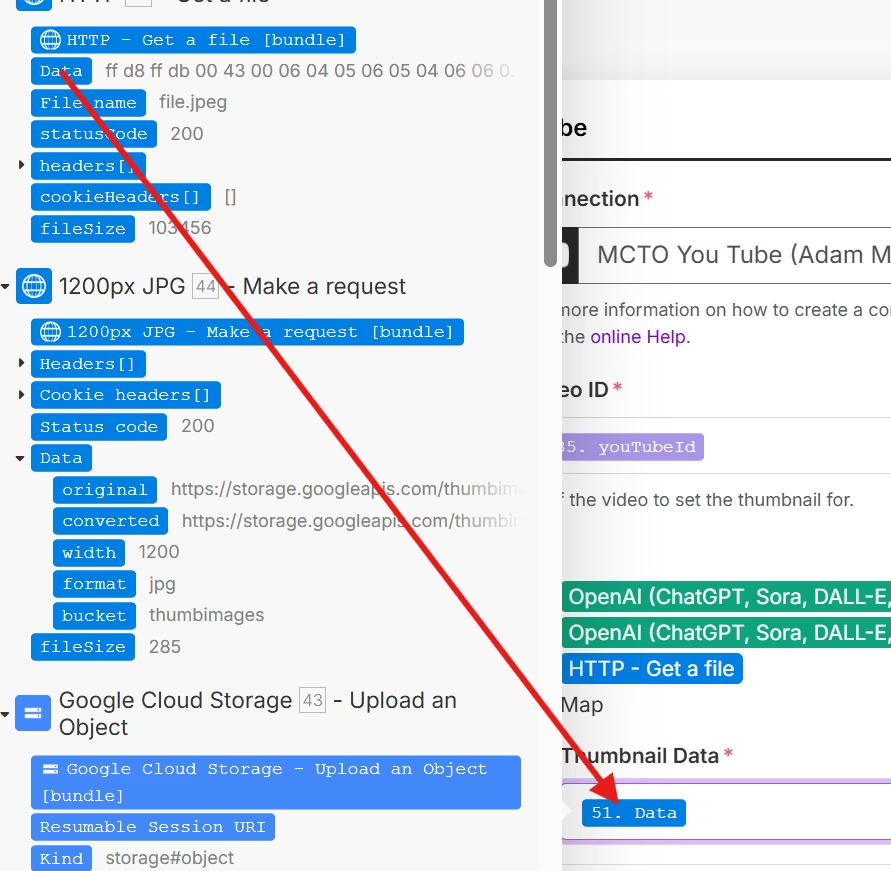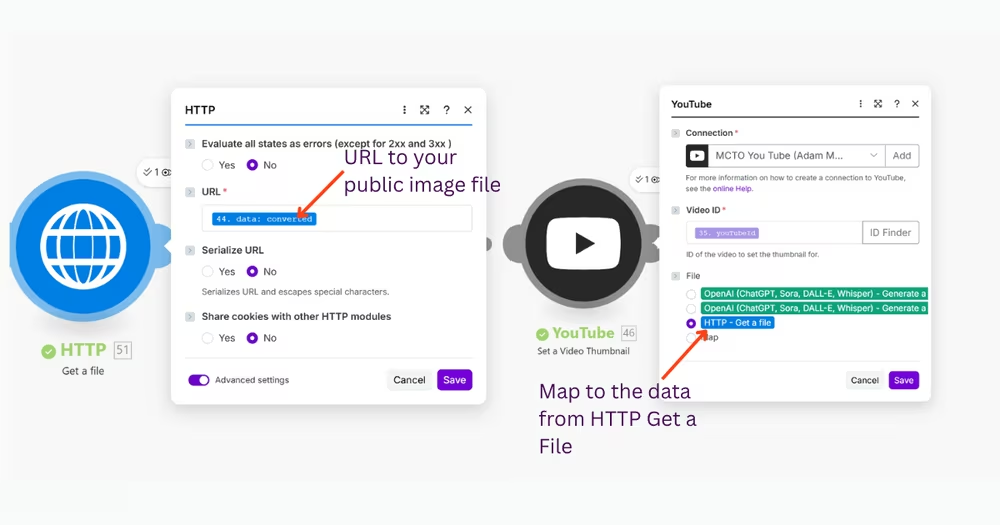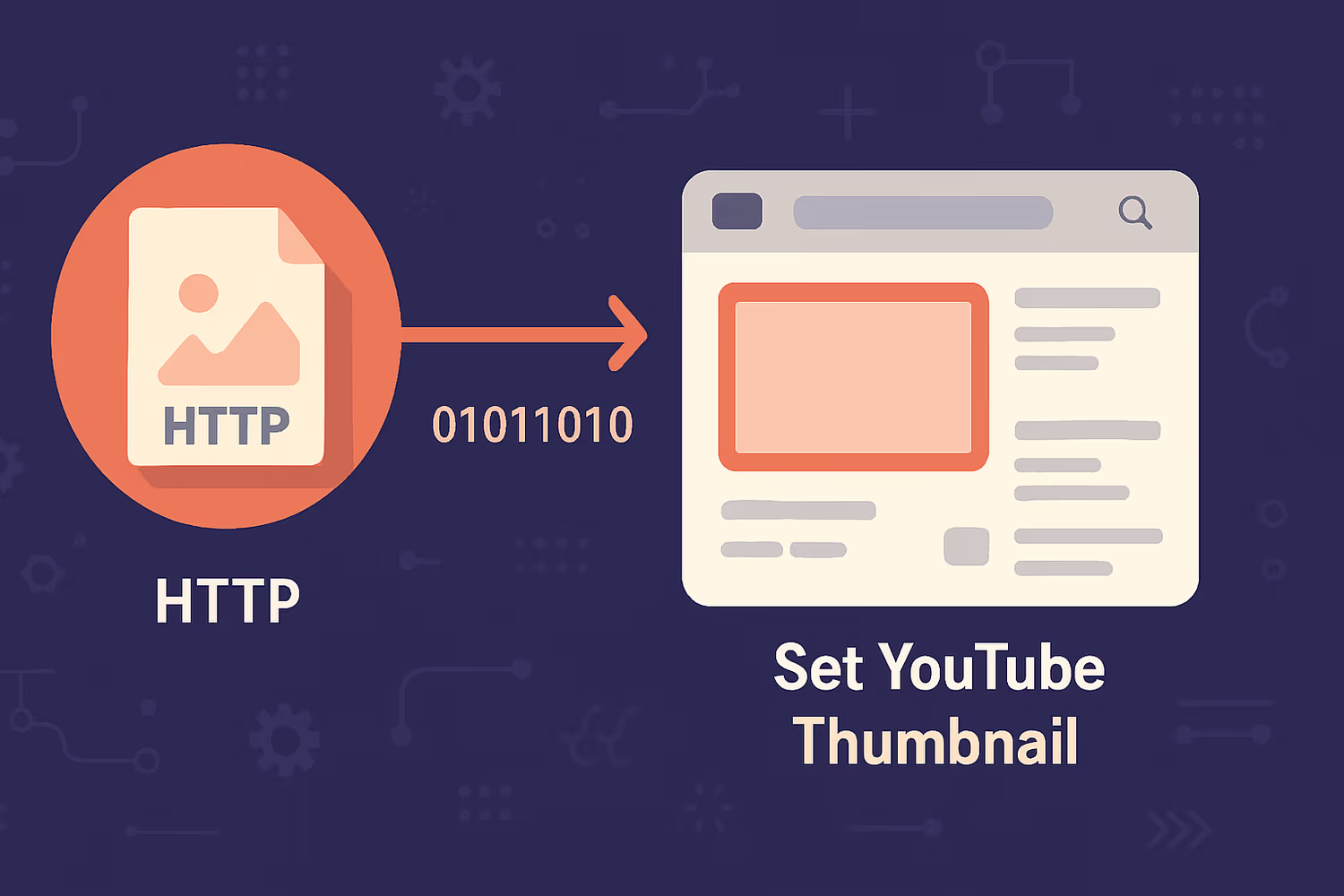How to Set YouTube Thumbnails in Make.com (The Missing Documentation)
The Problem: You're trying to set a video thumbnail using Make.com's YouTube module, but simply pointing to your image URL doesn't work. The documentation is virtually non-existent, and even the GPTs can't figure it out.
Time Wasted, Mine, about 45 minutes of frustration, Googling, and head-scratching.
The Solution, once you know it, is blindingly obvious. Here's what you need to do.
The Missing Piece: Binary File Data
Make.com's YouTube "Set Video Thumbnail" module doesn't accept direct image URLs; this is not Make’s fault, but it is by design in the YouTube API - dont get me started on that documentation. It needs the raw binary file data. Here's the workflow that actually works:
Step 1: Get the File as Binary Data
Before your "Set Video Thumbnail" module, add an HTTP > Get a File module.
Configuration:
- URL: The publicly accessible URL of your thumbnail image
- Output: This gives you the raw image file data as hex codes, see below

Step 2: Map the Binary Data to YouTube
In your YouTube "Set Video Thumbnail" module:
- Click the Map button for the file input field
- Select the Data element from your HTTP "Get a File" module output
- That's it. You don't need the filename or any other fields—just the data element

Critical Requirements
Your thumbnail image must be either:
- JPEG format, or
- PNG format
Other file formats won't work with YouTube's API.
The Complete Workflow
Here's what a working scenario looks like:
- HTTP > Get a File: Retrieves your thumbnail image from cloud storage (or wherever it's publicly hosted)
- YouTube > Set Video Thumbnail: Maps the binary data from step 1
- Done

Real-World Example
In our HITL workflow, we're experimenting with AI-generated thumbnails. The entire image is created programmatically, including embedding a face into the composition (because empirically, it does make a difference to click-through rates—even if staring at your own face all day is slightly disconcerting).

The workflow retrieves the AI-generated image from our cloud storage bucket, pushes the binary data to YouTube, and successfully sets the thumbnail—all automatically.
Why This Isn't Obvious
Make.com's documentation on this is essentially zero, and the YouTube API is not much better. The module interface suggests you should be able to point to an image URL, which seems logical, but doesn't work. The actual requirement that you need to retrieve and pass binary file data isn't documented anywhere obvious.
Even when you ask AI assistants about this specific problem, they don't know the answer. It's one of those gaps where you either stumble across the solution through trial and error or you waste 45 minutes like I did.
The Key Insight - Relevant For Other Make Scenarios
When an API requires file uploads (rather than URL references), you typically need to pass the actual binary file data, not just a pointer to where the file lives. The HTTP "Get a File" module does this for any file; it retrieves the binary data that other modules need.
Once you understand this pattern, you'll recognise it in other Make.com scenarios where file data needs to be passed between modules.
Bottom line: If Make.com's YouTube thumbnail setting isn't working, you're missing the HTTP module that retrieves the binary file data. Add it, map the data field, and you're done.
Hope this saves someone else 45 minutes of confusion.



